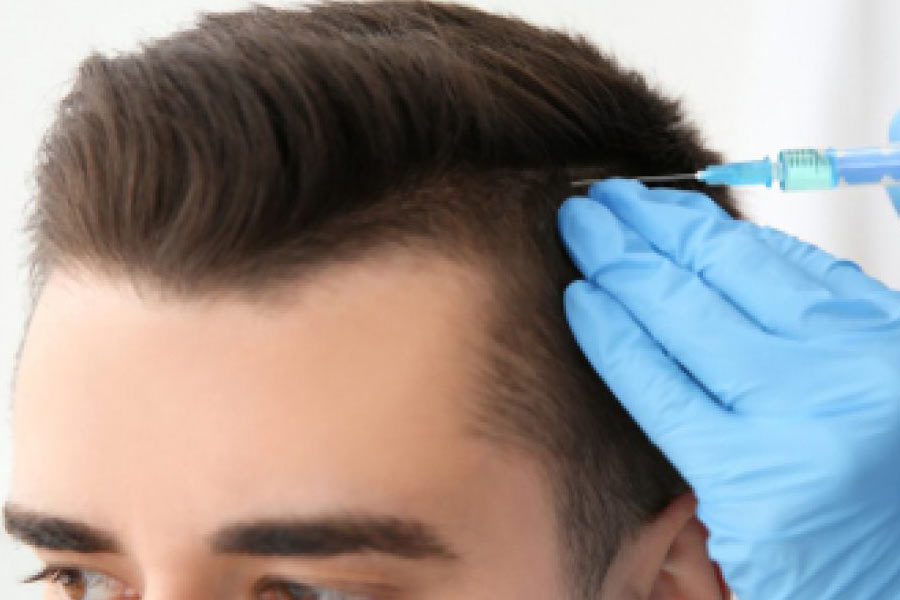Project Description
Hair Transplantation in Turkey


What Is Hair Transplantation?
Hair transplantation is the most safe and permanent way to make fresh hair for people suffering from hair loss. In hair transplantation, the patient’s own healthy hair is inserted into the hair loss regions. The zone where the hair is removed is an area where no hair loss occurs.
Patients permanently recover their own hair by transplanting their hair as though they had never lost it. Our target in hair transplantation is to make the natural hair appear natural for the patient with modern medical procedures.
Hair transplantation was first conducted in Japan in the 1930s and first emerged in the Western World in the 1950s.


Who can have a hair transplantation?
Today, nearly fifty percent of men over the age of 50 experience hair loss issues. Thus, hair transplantation is the most common cosmetic surgery for men. Hair loss is not a particular problem for males. Many women are now having hair loss or thinning issues.
Why is there a loss of hair?
Genetic characteristics are one of the most significant causes of hair loss, but they can also occur as a result of age, physical injury or multiple medical conditions. Hair transplantation may be done safely on all individuals with adequate numbers of hair follicles, regardless of the cause of hair loss. The transplantation procedure can be successfully performed not only on the head, but also on other hairy areas of the body, such as the eyebrows, the moustache and the beard.
How’s the hair transplantation done?
In the process, the hair follicles normally harvested from the nuchal region are transplanted into the intended hairless area. These hair follicles are considered grafts. In rare cases, an adequate quantity of healthy hair is not found in the nuchal region or in the patient’s temporal area. In such cases, hair follicles may be extracted from other parts of the body with hair, such as the patient’s arms or chest walls. The treatment will be done within a few hours based on the level of hair loss. If the hairless region is too big, a few sessions will be required to finish the procedure. In addition, the treatment is done with sedation under local anesthesia. During the treatment, a special bandage is added to the head of the patient and the patient is released a few hours later.While pain is uncommon, pain relievers are used to control pain. In general, the patient will go back to work by having the head hidden after a 3-day home break. The first surgical wound dressing is performed on the fifth day.

What hair transplantation procedures are used?
In hair transplantation procedures; the FUE approach that does not leave a scar or a method that may leave a small scar in the back of the head is done successfully. Whereas the hair follicles are taken one by one and are inserted in the defective areas in the FUE system, the skin band containing the hair is separated from the nuchal region in the method. The patient receiving hair transplantation should have good hair on the back of the head and on the side to be used as a donor area. Other aspects, such as the colour and thickness of the scalp, its properties, such as intensity and waviness, have an impact on the outcome of the treatment. The preferred approach of hair and scalp examination should therefore be determined by taking into account the patient’s priorities. While the FUE approach that does not leave a scar is usually chosen, it may be appropriate to use the method in some situations. Hair transplantation can be done not only for balding, but also to increase the density of the hair in the thinned areas.
What is the most critical issue for the transplantation of hair?
Hair transplantation is a major surgical procedure. In order to minimize the risk of hair transplantation, it should be done in a healthcare facility. In order to achieve the best results, it is very critical that the operation is carried out by qualified plastic surgeons who have been educated on this subject. In order for the hair transplantation to be successful, the hair follicles should be vascularized immediately, that is, they should “adher” to the region where the follicles are mounted. If performed using the right procedure, the success rate of hair transplantation is high. For a natural appearance, the hair should be transplanted to the right distance, angle and density of the hair loss areas.


Does the transplanted hair fall out?
The hair that has been transplanted will be shed after a few weeks of the transplantation process, but this is a natural scenario, as the hair lost will grow again 3-4 months later. Once this temporary shedding has healed, the transplanted hair follicles maintain their features and are not shed. However, the original hair in the same region may also be missing and new hair transplantation may be planned based on the drop in hair density. Hair loss can continue steadily after surgery. If an unnatural look occurs particularly in the new hairline area, additional surgical intervention could be required later.
What are the risks of hair transplantation?
Hair transplantation creates some risks when it is not conducted under appropriate supervision, which is the case for other surgical procedures. However, when the hair transplantation operation is done by an experienced plastic surgeon in a hospital setting, complications are rarely seen. Hair transplantation is a lengthy process and multiple transplantations may be required over 1-2 years depending on the degree of hair loss. Complications such as inflammation and severe scars can be observed, but they are very rare. During treatment, discomfort that can be managed by pain relievers, a sense of disturbance, any bleeding and swelling can be found. Numbness can arise in places where the hair is taken or where the hair is transplanted and spontaneously recovers within 2-3 months.
WHY EUROMEDICARE?
Good health results include a combination of physician experience, high technology and high-quality treatment. Euro Medicare offers world-class healthcare services to patients in all around the world in different cities in Turkey.
The hair transplantation operations are conducted in a hospital setting in Istanbul and Ankara, in Turkey.
Exclusive hair transplantation arrangements like rooms in luxurious hotels in the proximity of our hospitals and airport transfers are specially prepared for our foreign patients.
An experienced multicultural team of specialists is delivering 7/24 assistance to our international patients in their native languages.




